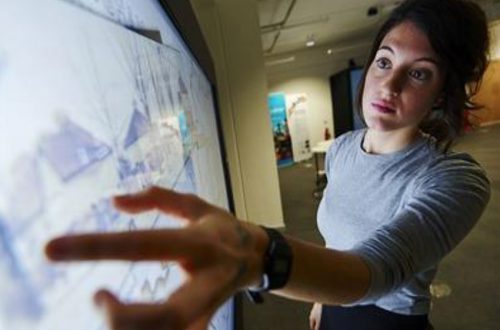Over the last 25 years, research has shown that the right environment can transform the way a student learns and retains information. According to Rob Abel, Malcolm Brown, Jack Suess – “In higher education, we are entering a period in which it is the connections between everything and everyone that are of importance…A connected learning environment offers new ways to connect things that were previously considered disparate and “un-connectable”: people, resources, experiences, diverse content, and communities, as well as experts and novices, formal and informal modes, mentors and advisors.”
ACA developed the Five Modes of Learning to help create these connected learning environments. We approach a project by recognizing the diverse ways that students learn; our studio strives to create library environments that will enhance their experience.
Aaron Cohen Associates’ Five Modes of Learning are:
• Touchpoint
• Collaboration
• Reflective
• Social
• Presentation
A SPACE FOR EVERY MODE OF LEARNING
Touch point
The touchpoint should be the first point of contact in the library. It is a place for casual contact and interactions; it is also a place where a student can interact with the collection. A touchpoint is located in an open environment, with students able to use it independently or ask a librarian.
A typical touchpoint could be the circulation desk or help desk—but these spaces can become much more than a place to check out materials. There has been a shift in Library services from a fixed stationary point to a mobile series of help hotspots. Or, a touchscreen can be a self-directed, informal learning portal.
Collaboration
The collaborative learning mode enables dialogue between people who come together to explore new possibilities and challenging problems. It becomes a place for students to share ideas and information as they work together, or spontaneously with others nearby. It offers a way to connect people who might otherwise not have the opportunity to interact. Collaborative areas must offer flexible seating arrangements and access to power.
Reflective
Even as technology changes and data-access increases, students still need a quiet space to work. The reflective learning mode refers to a typical “study” environment: it is a personal space that is conducive to quiet study and reflection. Understanding human behavior is an important aspect of reflective learning environments. Many students will look for a place to concentrate and focus intently on their work.
Social
A social space is somewhat self-explanatory, but essential to a successful library design. It is a conversation area where it is acceptable—even expected—to have more noise, possibly food, and a place where students can unwind or even work in an informal environment. A library café is a good example of a social learning space.
Presentation/Training
University students often need a space to do practice presentations or be part of a group in which one person is speaking to all. Semi-enclosed or enclosed areas provide a good environment for the presentation learning mode.
Covering all the “Five Modes of Learning” enables a library or learning center to offer the perfect mix of design and functionality. By keeping learning modes in mind during the planning process, a library truly can serve every student’s needs.



